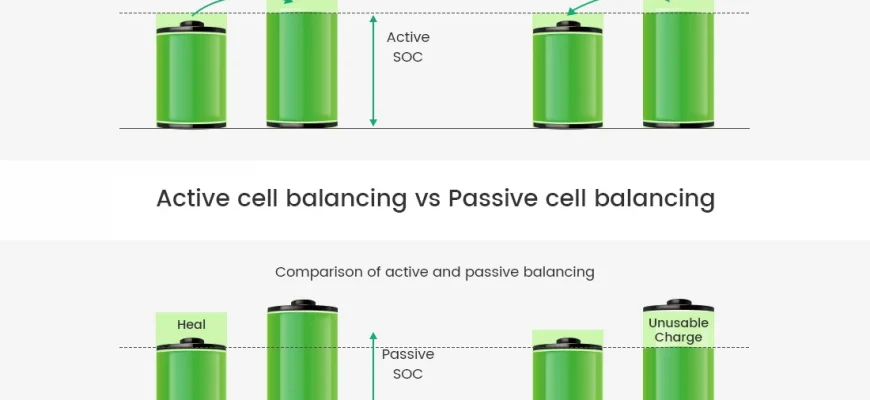Batteries are the unsung heroes of our modern world‚ powering everything from smartphones to electric vehicles. Yet‚ behind their seemingly simple operation lies a complex interplay of negative and positive dynamics that determine their efficiency‚ longevity‚ and safety. In this article‚ we delve into the intricate dance of electrons and ions‚ exploring how these forces shape our daily lives.
The Basics of Battery Operation
At the heart of every battery is a chemical reaction that converts stored chemical energy into electrical energy. This process hinges on two electrodes: the anode (negative) and the cathode (positive). When a battery is discharging‚ electrons flow from the anode to the cathode through an external circuit‚ while ions move through the electrolyte‚ maintaining electrical neutrality.
Positive Dynamics: The Role of the Cathode
The cathode plays a pivotal role in the battery’s performance. It is typically made from materials like lithium cobalt oxide or nickel manganese oxide‚ which facilitate the movement of lithium ions during discharge. As the battery discharges‚ lithium ions migrate from the anode to the cathode‚ where they intercalate into the cathode material. This process not only releases energy but also influences the battery’s overall capacity and voltage stability.
- Energy Density: The choice of cathode material directly impacts the energy density of the battery. Higher energy density means longer-lasting power.
- Voltage Stability: A well-designed cathode ensures consistent voltage output‚ crucial for the reliability of electronic devices.
Negative Dynamics: The Anode’s Significance
Conversely‚ the anode is equally vital to battery function. Common materials for anodes include graphite or silicon‚ chosen for their ability to host lithium ions. During charging‚ lithium ions are stored in the anode‚ a process known as intercalation. The efficiency of this process greatly affects the battery’s charge time and lifecycle.
- Charging Efficiency: A well-optimized anode can significantly reduce charging times‚ enhancing user experience.
- Lifecycle Management: The material’s stability during repeated charge/discharge cycles is crucial for the battery’s lifespan.
The Balance of Charge: Why It Matters
The interplay between the anode and cathode is where the magic of battery dynamics truly happens. An imbalance can lead to several issues:
- Capacity Fade: Over time‚ repeated cycling can lead to degradation of either electrode‚ reducing the battery’s overall capacity.
- Safety Hazards: An imbalance can also result in overheating or‚ in extreme cases‚ thermal runaway‚ creating safety risks.
Future Innovations in Battery Technology
As technology advances‚ researchers are exploring new materials and designs to optimize battery performance. Solid-state batteries‚ for instance‚ promise greater efficiency and safety by using a solid electrolyte‚ potentially minimizing risks associated with liquid electrolytes.
- New Materials: Innovations like silicon anodes and high-capacity cathodes could revolutionize energy storage‚ offering faster charging and longer lifespans.
- Sustainable Practices: The push for eco-friendly battery solutions is leading to the exploration of recyclable materials and sustainable production methods.
Understanding the dynamics of negative and positive battery components is crucial for harnessing the full potential of this technology. As we continue to innovate and improve battery designs‚ balancing these dynamics will be key to achieving safer‚ more efficient‚ and longer-lasting power sources. In our quest for a sustainable future‚ the science of batteries will undoubtedly play a central role‚ powering the innovations of tomorrow.










A fantastic overview of battery technology! The balance between positive and negative dynamics is well articulated. I learned a lot from this article.
I found the section on cathodes particularly fascinating. The choice of materials really does make a huge difference in performance. Well written!
The explanation of energy density and voltage stability was very enlightening. This article makes a complex subject accessible to everyone. Kudos to the author!
This article brilliantly explains the complex workings of batteries! I never realized how much goes on behind the scenes to power my devices. Great read!
This piece is a must-read for anyone interested in technology and sustainability. Batteries are indeed unsung heroes, and this article highlights their importance perfectly.
I appreciate how this article breaks down battery operation into understandable parts. It’s amazing how chemistry powers our everyday lives!
I loved how the author explained the flow of electrons and ions in such detail. It made me appreciate my gadgets even more! Highly informative read.
The insights into anode materials were really interesting. It’s clear that every component plays a crucial role in battery efficiency. Great job on this article!